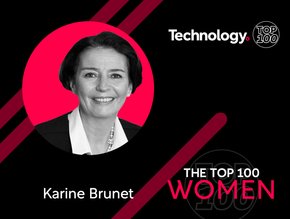Research suggests Samsung and IBM lead AI patent race

The race to register AI patents is being won by the likes of Samsung, IBM and Tencent.
That’s according to research from consulting firm OxFirst, which found that in the last ten years, Samsung Electronics filed 5,073 AI-related patents, followed by IBM and Tencent on 2,062 each. In fourth, fifth and sixth placewere LG, Microsoft and Baidu, at 1,541, 1,388 and 1,221 respectively.
Those patent registrations were mainly filed in areas covering neural networks, machine learning and methods for enabling human-machine communication. The greatest growth in filing machine learning patents came in 2017/18. Meanwhile, AI applications in the medical industry, such as diagnosis and simulation, are particularly prominent.
Dr Roya Ghafele, Executive Director of OxFirst, said: “To come to grips with market trends in AI, analysts traditionally study the value of corporations and the competitive dynamics within an industry. However, many ignore the fact that Intellectual Property (IP) can fundamentally restructure the economic dynamics between companies.
“Patents not only bear the potential to empower a company’s unique position in the market, but provide it also with the ability to generate income by licensing or selling patents. Equally, patents allow a company to make substantial savings in R&D when using the IP of others. This can be achieved by in-licensing IP or acquiring IP. As such, patents can be a source of revenue in and by themselves.”
The locations where AI patents are being filed are also geographically unequal. Over 100,000 were found to have been filed in China, with the United States in second with over 60,000. Europe was much further down the list, with over 5,000.
“This data suggests that companies are recognising the economic potential of patents,” said Ghafele. “The analysis above helps assess how different patent owners perform in comparison to each other and how the patent space is distributed among them. Match this against a patent licensing rate of 15%, which can be caught across the sector and it becomes evident that even a small fraction of the patents in this space could offer attractive financial returns. This can be achieved by either trading the patents directly or indirectly.”






